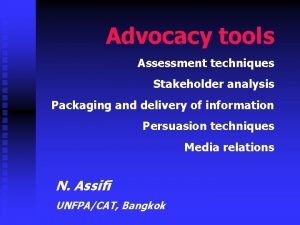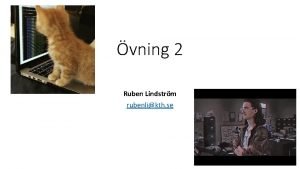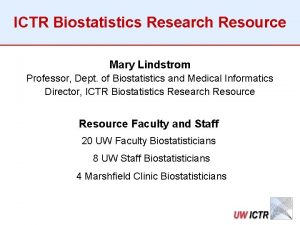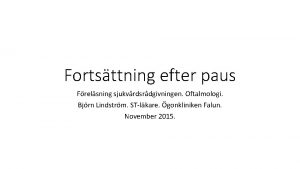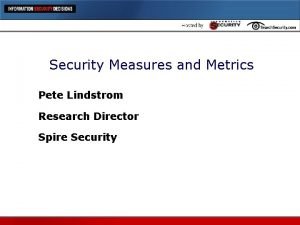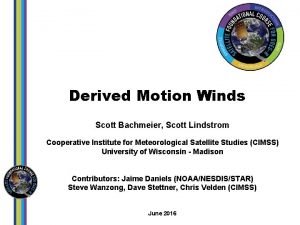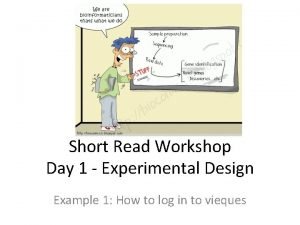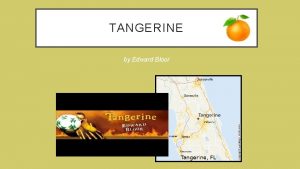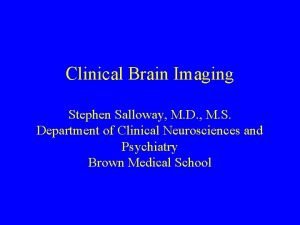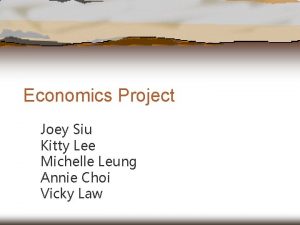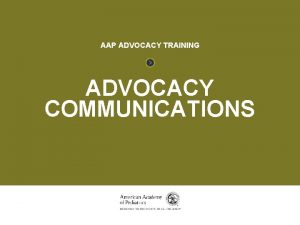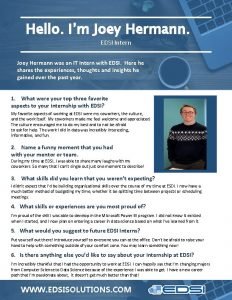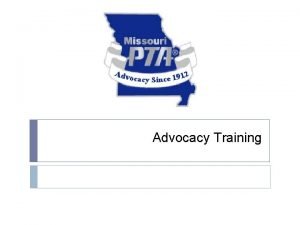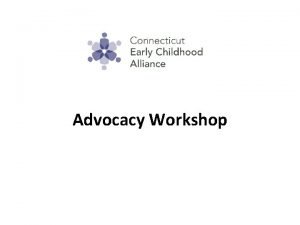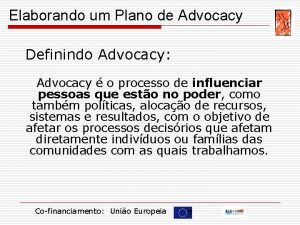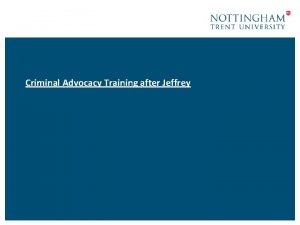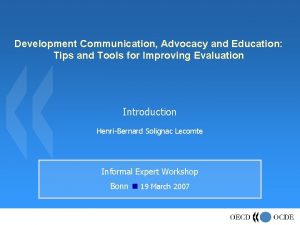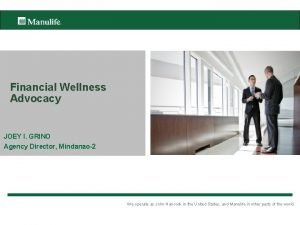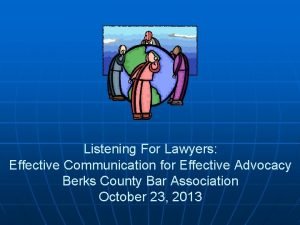Tools and Tips for Effective Advocacy Joey Lindstrom















- Slides: 15

Tools and Tips for Effective Advocacy Joey Lindstrom Manager for Field Organizing @Joseph. Lindstrom jlindstrom@nlihc. org

Common Myths • • “I’m not an expert. ” “I don’t have time. ” “I’m just one person, my voice doesn’t count. ” “Government is broken, so advocacy is a waste of time. ” • This myth is intentionally perpetrated by some.

Common Myths • “This legislation won’t ever pass. ” • Is this even a valid criterion? • “This issue isn’t about the population I serve. ” • “My organization is not political. ” • “I can’t because I’m a nonprofit. ”

Legal Considerations Lobbying is Allowed! 501(c)(3) public charities (including houses of worship and public foundations) can lobby within the generous limits allowed by federal law. Elected officials rely on the experience and knowledge of local organizations when making decisions • One key resource: Bolder Advocacy campaign by Alliance for Justice. www. bolderadvocacy. org

Legal Considerations Advocacy VS. Lobbying • Lobbying is a subcategory of Advocacy • Lobbying involves taking a position on a specific piece of legislation and working for its passage or defeat Advocacy • Public education and organizing in support of your mission • Includes informing public officials about an issue or problem without specific legislation

Grassroots Lobbying Grassroots lobbying involves a Call to Action (CTA) • States a specific position on legislation • Encourages people to contact their elected officials to persuade, inform, and influence A good Call to Action is a process • Provide background information • Identify the appropriate target for advocacy messages • Specifically tell advocates what they should do, and how to contact that target of the CTA

Effective Lobby Meetings • Schedule two weeks in advance. • Coordinate meetings with a coalition. • For federal elected officials, it is often easier to get the actual Representative or Senator for home district meetings • Meeting with staff is often just as good as meeting with the actual elected official—sometimes better.

Effective Lobby Meetings Before the actual meeting… • Know what your specific asks will be. • Know how your asks connect to local issues. Specific data!!! • Rehearse your arguments and anticipate rebuttals/questions. • Do some background research on the person you’re meeting with.

Lobbying Best Practices In meetings, letters, or calls… • Introduce yourself and your organization. • Presenting the context of who you work with and in what communities provides important background for your asks. • Connect your work with the elected official • Try to tie your issue and ask to issues your legislator already works on and/or cares about. • MAKE A SPECIFIC ASK! • “Support/oppose xyz legislation. ” • If an elected official says they will not support your ask, always insist on a reason why.

Does Advocacy Work? Staunch Opponent Neutral Supporter Staunch Supporter

Lobbying Best Practices • You don’t need to know everything. It is completely okay to not know the answers to questions. • Host elected officials at your events. Invite them to speak at fundraisers or media briefings. Have them tour your developments or facilities to see the benefit of your work. • Thank your elected officials! Acknowledge good deeds.

Follow Up Is Key After the lobby meeting or call… it’s not over! Share feedback with advocacy organizations like NLIHC. Following up and building a relationship with the office is key. If your meeting produced any questions or issues that can be addressed with additional information, send it along to the staff person you met with. • Continue to educate staff members you have met. Let them know when you have reports coming out, and provide information when they have questions about your issues or your clients. • Use staffers you have met as your continual point of contact. • •

Find a Way to be Involved Beyond Lobbying… • Sign-on letters • Petitions • Voter education • Publicizing data • Rallies and demonstrations

Support NLIHC through membership

Stay in touch! Joey Lindstrom Manager for Field Organizing Twitter: @Joseph. Lindstrom Email: joseph@nlihc. org Phone: 202 -507 -7441 (direct)

